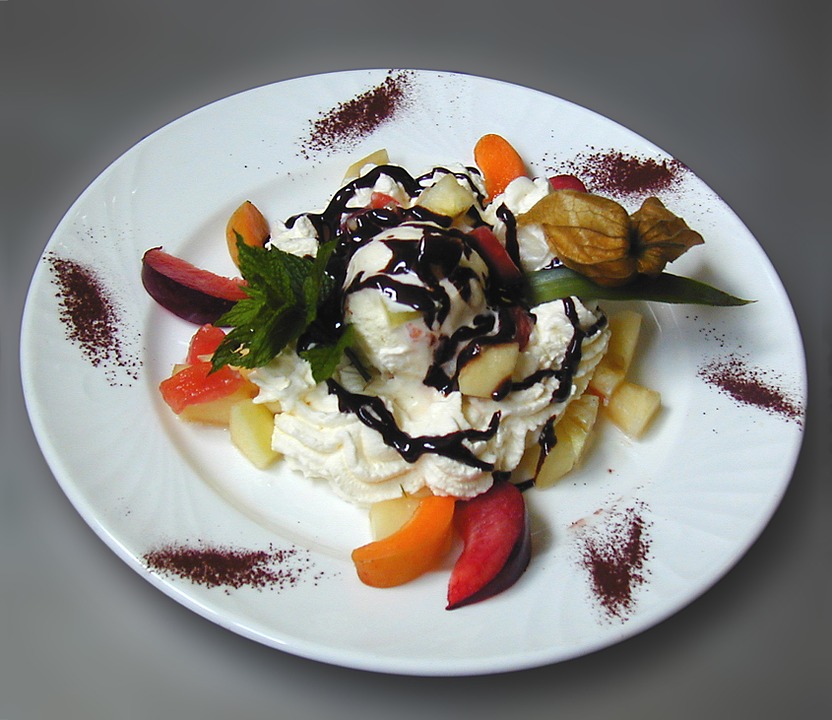Ice cream, with its creamy texture and tempting sweetness, is a summertime staple for many humans. But what about our furry feline friends? Can cats safely indulge in this frosty treat? This article delves into the complexities of feline digestion, exploring the potential risks and rewards of offering ice cream to our feline companions.
Part 1: The Digestive Delicate

1.1. Lactose Intolerance: A Common Feline Challenge
- The Enzyme Deficiency: Cats, unlike humans, typically lack the enzyme lactase. Lactase is essential for breaking down lactose, the sugar present in milk and dairy products. This deficiency makes most cats lactose intolerant.
- The Digestive Domino Effect: When lactose isn't properly broken down, it ferments in the gut, leading to a cascade of unpleasant symptoms, including diarrhoea, gas, bloating, and vomiting. These digestive disturbances can cause significant discomfort and potential health complications for your cat.
1.2. Digestive Sensitivity Varies Across Individuals
- Breed Differences: While lactose intolerance is common in cats, there is some variability across breeds. Certain breeds, such as the Bengal, may possess a slightly higher tolerance for dairy due to genetic factors.
- Individual Susceptibility: Even within the same breed, individual cats can vary in their sensitivity to lactose. Some cats might experience minimal discomfort from a small amount of dairy, while others may exhibit severe reactions.
Part 2: Beyond the Digestive System: The Broader Implications

2.1. The Sugar Conundrum: Sweetness and Health
- Sweet Taste Perception: While cats don't have the same sweet taste receptors as humans, they can detect some sweet compounds. However, their ability to taste sweetness is limited compared to other species, and their response to sugar can vary.
- Sugar Overload: Ice cream, laden with sugar, can contribute to weight gain, dental issues, and other health problems in the long term. A diet high in sugar can lead to insulin resistance, an increased risk of diabetes, and even liver problems.
2.2. The Hidden Dangers of Artificial Sweeteners
- Xylitol: A Fatal Feline Foe: Some ice creams contain artificial sweeteners like xylitol, which are highly toxic to cats. Even small amounts of xylitol can be fatal, causing liver failure, seizures, and death. Always carefully check the ingredients label of any treat you offer to your cat.
Part 3: Understanding Your Cat's Preferences and Behaviour

3.1. The Power of Observation: Deciphering Your Cat's Body Language
- Signs of Enjoyment: When offered a new treat, observe your cat's body language. A happy cat may show signs of enjoyment such as purring, rubbing against you, or licking their lips. These positive cues can indicate that they are enjoying the treat.
- Signs of Discomfort: However, if your cat exhibits signs of discomfort, like flattened ears, a tucked tail, or avoiding the treat, it's crucial to discontinue offering it. These negative cues can indicate they find the treat unpleasant or are experiencing digestive distress.
3.2. Monitoring for Digestive Reactions: Recognising Warning Signs
- Stool Changes: After offering a new food, pay close attention to your cat's stool consistency and frequency. Any changes, such as diarrhoea, constipation, or an increase in stool frequency, could indicate a digestive reaction.
- Vomiting or Regurgitation: If your cat vomits or regurgitates after consuming a new treat, it's a clear indication that the food is not agreeing with their digestive system. Consult your veterinarian for guidance.
Part 4: The Art of Responsible Treat-Giving
4.1. Choosing Safe Alternatives: Exploring Cat-Friendly Options
- Commercial Cat Treats: A wide variety of commercial cat treats are available, specially formulated with ingredients tailored to their nutritional needs. These treats are often flavoured and textured to provide enjoyment and enrichment.
- Homemade Treats: You can also create healthy and delicious cat treats at home using natural ingredients. Online recipes can guide you, and incorporating flavours your cat enjoys, such as tuna, chicken, or salmon, can increase their appeal.
4.2. Embracing Healthy Indulgences: Fruits, Vegetables, and Meat
- Fruits and Vegetables: Offer small portions of cat-friendly fruits like blueberries, strawberries, and bananas. Some vegetables like carrots, green beans, and pumpkin can also be enjoyed in moderation. Always choose fresh, organic options and remove any seeds or pits.
- Meat-Based Treats: Cooked chicken, turkey, and fish can be given as occasional treats. Ensure these are cooked thoroughly to eliminate potential bacteria and avoid bones, which can be a choking hazard.
Part 5: The Importance of Veterinary Consultation
5.1. Seeking Professional Guidance: Addressing Individual Needs
- Dietary Restrictions: Some cats may have specific dietary restrictions due to pre-existing health conditions, allergies, or sensitivities. Your veterinarian can assess your cat's individual needs and provide tailored dietary recommendations.
- Tailored Treat Plans: Your veterinarian can help you create a safe and healthy treat plan for your cat, ensuring that they receive the appropriate nutrients and avoid any potential risks.
Part 6: FAQ: Demystifying the Ice Cream Conundrum
6.1. Can cats eat ice cream if it's lactose-free?
While lactose-free ice cream might seem like a safer alternative, it's still not recommended for cats. Even without lactose, the high sugar content and potential presence of artificial sweeteners pose risks to their health.
6.2. Is it okay to give my cat a small lick of ice cream?
A small lick of ice cream might not cause immediate harm, but it's not a good idea to make it a habit. Even a small amount can trigger digestive issues or contribute to long-term health problems.
6.3. Can cats eat whipped cream?
Whipped cream is generally considered unsafe for cats. It's even higher in lactose and fat than regular ice cream, making it even more likely to cause digestive upset.
6.4. What can I give my cat as a treat instead of ice cream?
Many healthy and delicious alternatives to ice cream are available. Opt for commercially produced cat treats, homemade treats with cat-friendly ingredients, fruits and vegetables, or meat-based treats.
6.5. My cat loves to steal my ice cream, how can I stop this?
Keep your ice cream out of reach of your cat, and ensure they have access to their own appropriate treats. Never offer your cat ice cream, even if they beg for it, as their health is paramount.
6.6. What if my cat accidentally eats ice cream?
If your cat accidentally eats ice cream, observe them for any signs of digestive upset. If they show signs of discomfort, contact your veterinarian immediately.
Conclusion
While the allure of ice cream may tempt our feline companions, it's essential to remember that it's not a safe or healthy treat for them. Their sensitive digestive systems and potential lactose intolerance make dairy products a risky choice. Instead, offer your cat a variety of cat-friendly alternatives to satisfy their cravings and ensure their well-being. With a little understanding and careful consideration, you can provide your cat with delicious and safe treats that they will surely enjoy.
Everyone is watching
-

Are Cat Ribs Flexible? Understanding Their Anatomy
CATS & KITTENSThis article delves into the fascinating world of feline anatomy, exploring the flexibility of cat ribs and ho...
-

Can Cats Eat Bananas? (Everything You Need to Know)
CATS & KITTENSThis article dives into the intriguing question of whether cats can safely enjoy the sweet, yellow fruit, bana...
-

Cat Lifespan: How Long Do Cats Live?
CATS & KITTENSThis comprehensive guide explores the factors influencing the lifespan of our feline companions, providing ins...
-

Can Cats Get COVID-19? What You Need to Know
CATS & KITTENSThis article will delve into the fascinating world of feline COVID-19 susceptibility. We'll explore whether ca...
-

Can Cats Eat Eggs? A Complete Guide to Egg Safety for Your Feline Friend
CATS & KITTENSWhen it comes to treating our furry companions, we all want to ensure we're doing what's best for them. Eggs...
